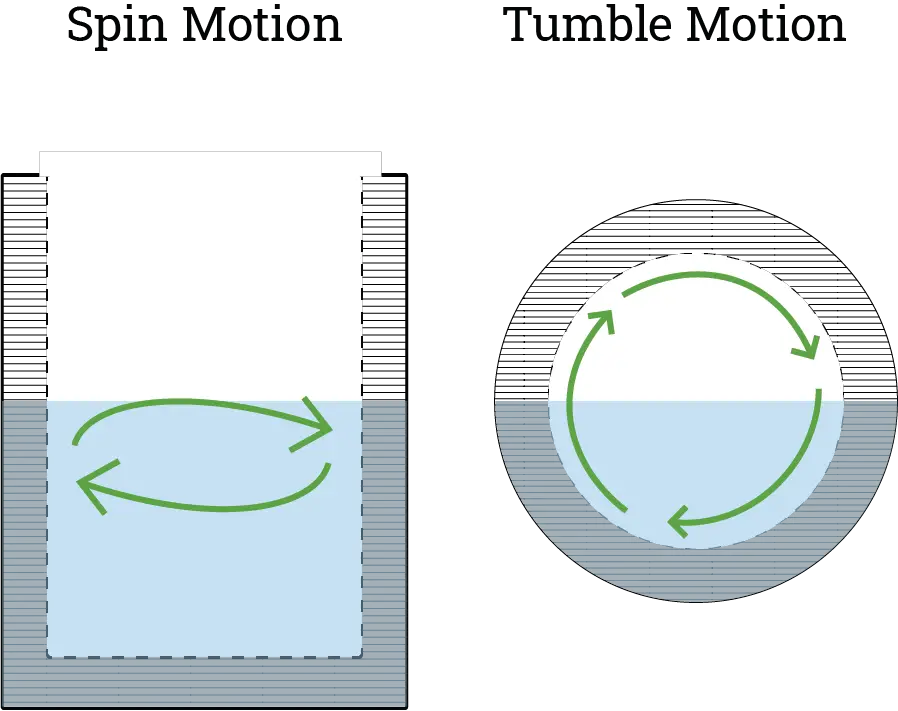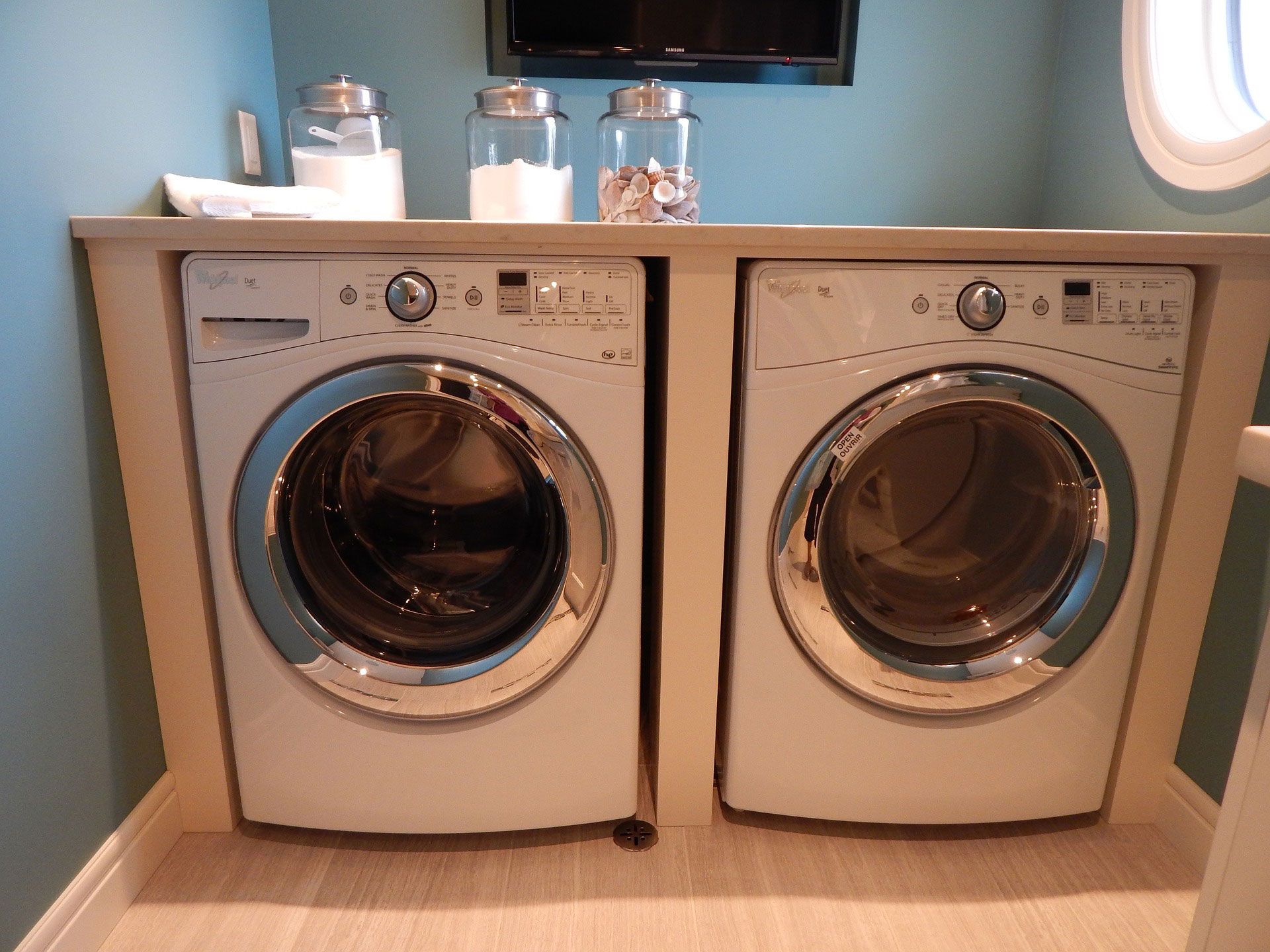While a tumble dryer is not one of the need-to-have appliances in our homes, it is certainly a nice-to-have item during the monsoon season when drying clothes is next to impossible. It will also give you access to the warmest and fluffiest towels and comforters all year round. But what exactly is a tumble dryer, and how is it different from a spin dryer?
Tumble drying is the process of drying your laundry using a heating element (either gas or electric) while it is being ‘tumbled’ in the dryer’s drum. This is commonly found in front loading dryers and washer-dryers. While being a lot more expensive the spin dryers, tumble dryers perform better when it comes to drying and it also has other features that a spin dryer just can’t do.
In this article, we’ve compiled everything you need to know about tumble dryers to help you better understand this nifty appliance, and to help you decide if buying one for your home is necessary or not.
How does a tumble dryer work?
A tumble dryer works by circulating hot air in the drum containing the wet clothes while an electric motor to rotates the drum up and down causing the clothes to tumble (hence the name). This tumbling motion helps to evenly dry the laundry.

The hot air can be created with either a gas or an electric heating element, the pros and cons of which we are going to discuss in a later part of this article.
Spin dry vs. tumble dry
A spin dryer is a more affordable alternative to the tumble dryer, and it does not require a heating element. However, it does not have the same level of performance as a tumble dryer, and its convenience features are sorely lacking.
Spin drying mimics the wringing action of handwashing by spinning the dryer tub rapidly. This removes the water from your clothes through centrifugal force. However, there may be a little amount of moisture left in your clothes that may need to be air-dried afterwards.
Here are the other differences between the two:
Spin Drying
- Models are more affordable upfront
- More affordable to operate
- Requires no installation|
- Does not fully dry clothes (may need to be air dried after)
- Drying may take longer if the items are heavy
Tumble Drying
- Clothes get fully dry
- Clothes can be sanitized through heat
- Quicker to dry
- Can be stackable
- Models are more expensive upfront
- More expensive to operate
- Needs installation (if gas-powered)
- Gas dryers are only available in large capacities
The primary factor to consider in your decision between the two methods will be your budget. A spin dryer is a fraction of the cost of an electric or gas dryer. Not only that, but they are cheaper to operate as well. However, they do not perform as well as the tumble dryer, and they cannot sanitize your clothes through heat.
Types of tumble dryers
As we’ve said earlier, the source of heat can either be supplied by gas or by an electric heating element. Here are the other differences between the two:
Gas Dryer
A gas dryer uses a blower wheel to draw air from the outside of the unit and then heated by natural gas or propane. This hot air is eventually circulated in to the dryer tub to dry the wet clothes. As this happens, the dryer tub also rotates, using its baffles (or fins) to tumble the clothes to dry them evenly.
Take note that a gas dryer is not wholly gas-powered. It still needs to be plugged in to power the other components such as the tub’s drive system as well as the pilot light that ignites the gas.
Electric Dryer
An electric dryer uses the same principle as the gas dryer does, but it does it differently. A blower wheel is still present to draw air from the outside of the unit. But instead of gas, an electric dryer uses heating coils powered by electricity. Basically, this works by sending an electric current to a coil that has a strong electrical resistance. As the electrons steadily build up in the coil, they produce the heat that will be used to make the air hot. After that, it is much of the same. The dryer tub will still rotate, and the clothes will be dried evenly.
Gas vs. Electric
While they do have the same end-result, a gas dryer and an electric dryer have different pros and cons that to know which one is for you.
Gas
- Cheaper to operate
- Faster drying time
- More expensive upfront
- Needs installation
- Requires more space for venting
Electric
- Cheaper upfront
- No installation needed
- More expensive to operate
- Slower drying time
What is an inverter motor?
An inverter is a device that controls the frequency of the incoming electrical current that goes to the motor; this allows the washing machine’s motor to operate at variable speeds. It also allows the washing machine to power the drum directly and not through a belt-driven motor. Not only does this make the operation less noisy, it will also translate to savings energy over the long run. Take note that the energy savings claim is only for the motor and not the electric heater.
We’ve discussed the benefits of an inverter vs. non-inverter washing machine in an article before – go check it out!
Which should you buy?
Tumble dryers come in different sizes and configurations. Some are standalone units that can be stacked on top of a compatible washer unit, while other washing machines have a built-in tumble drying function.
Buying a dryer and a washing machine separately is a good choice if you have a smaller budget to play with. However, this will eat up more space in your laundry room. If you have a small area to work with, you should definitely go with a washer-dryer as this combines those two units into one package. They tend to be a lot more expensive though.
We’ve written about the best standalone dryers and the best washing machine with dryers in a previous article. Go check them out as we’ve also given our top models for each category.
Conclusion
We hope that this article has shed some light into what tumble dryers are. If you are still unsure whether to buy a spin dryer or a washer-dryer instead, we’ve written a buying guide to help you with your decision-making process.

Miguel Mores worked for 5 years as a member of the product management team for a home appliance company in the Philippines. He started 101appliance to answer the most common customer questions that he has encountered during his time in the industry. He now works in the digital marketing field and manages a small online bookstore on the side.


I have never used a tumble dryer before, but I am definitely going to get one now!